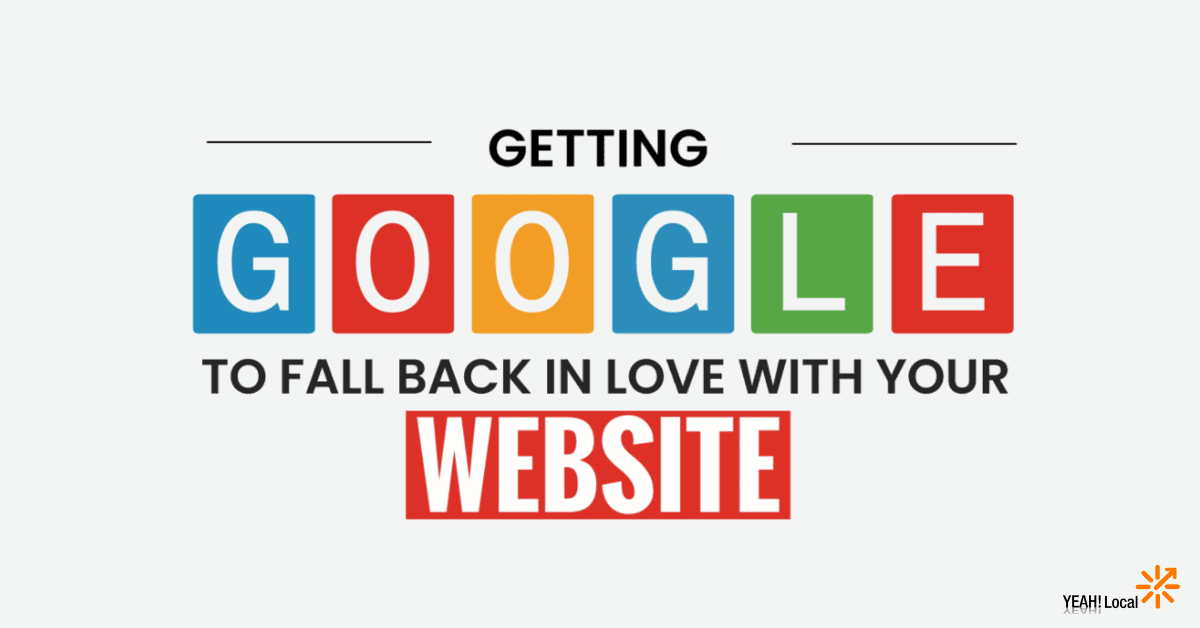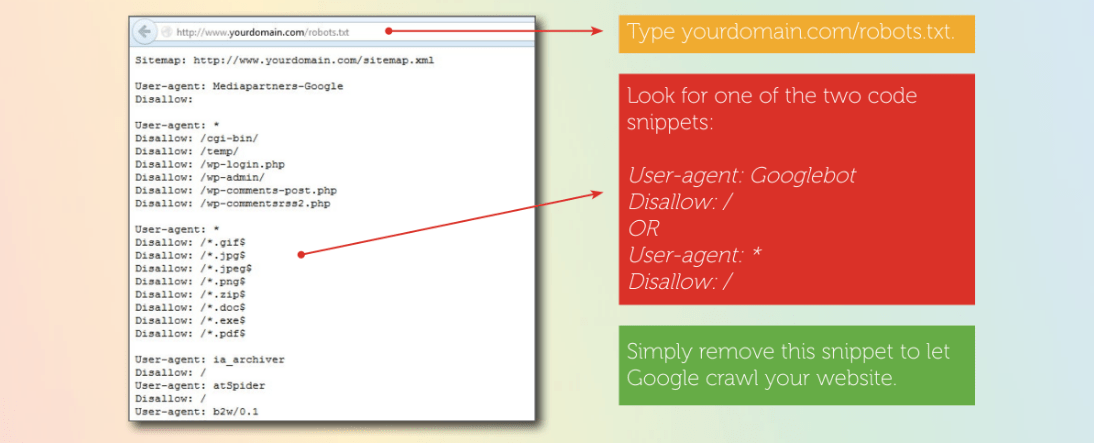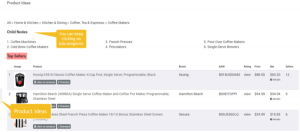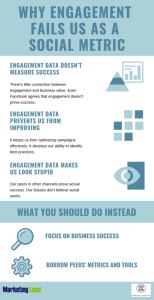
According to research, 53% of the total traffic on your website can come from organic searches. However, since the algorithm changes often, so does the ranking of your content on Google.
One day, your website is at the top of Google’s first page, and with the next update, you’re on the fifth page simply because Google has tweaked its algorithm.
So, what can you do to get Google to fall back in love with your website?
You can either wait for it to happen over time – which can take months – if at all. Or proactively make website updates to ensure your website is in Google’s good graces.
We will dive in and explain the second approach in this article.
First – What if Your Entire Website isn’t Indexed?
Google crawls the web, following hyperlinks to find new content. In doing so, the search engine’s bots look at web pages, going from link to link to bring information back to the servers.
If your whole website is not indexed, it’s likely because of a crawl block. The block is in your robots.txt.file.
Here’s how to fix it:

- Type yourdomain.com/robots.txt.
- Look for one of the two code snippets:
User-agent: Googlebot
Disallow: /
OR
User-agent: *
Disallow: /
- Simply remove this snippet to let Google crawl your website.
Likewise, if Google is not indexing a certain page in your website, a crawl block might be the reason.

- Go to Google Search Console and select the inspection tool.
- Paste the URL of the webpage in the tool.
- Click the ‘Coverage’ block.
- In the details displayed on the screen, check for the following error: “Crawl allowed? No: blocked by robots.txt”.
- If the error exists, check the robots.txt file and remove any ‘disallow’ rules.
How to Update Old Blogs to Get Re-Indexed and Crawled?
When it comes to old content, you can either let it be, delete it, or update it. We’d suggest going with the last option since it helps you reap the results of your former SEO efforts and keeps your site relevant.
Here are some ways to update your old articles or content:
Reoptimize for Keywords: If your blog post is five years old, the keywords you used then may not be relevant now. Use one of Google’s keyword planners to find the currently relevant keywords and use them in your updated content.
Interlink: Interlinking helps get more views on your older or less read posts along with spreading link equity or ranking power around your website. It also creates an information hierarchy on your site, allowing the reader to navigate easily.
Add New Content Formats: Visual content marketing wasn’t as popular five years ago as it is today. In fact, there was a 10.5% increase in visual content use from 2018 to 2019. So, if your old blogs only have text, spice them up with videos or images.
Update Expired Content: Your older content may not be indexing anymore simply because the promotion/event may have expired since you published a blog about it. Go through your old posts and update what should stay, what should be updated, and what needs to go, to make it easy to index for Google’s bot.
Get Google to Recrawl the Updated Content
Once you’ve made the updates, you can ask Google to recrawl your content by requesting it.
If you’ve made changes to a certain blog post, you can request for recrawl by following the steps given below:
- Make sure you’re compliant with the general guidelines.

- Use the URL Inspection tool to inspect the URL.

- Then, click on Request Indexing. It will run a live test on your URL and queue it for indexing. If there are any issues on the page – as shown by the tool – you need to fix them.
However, if you want to submit multiple URLs, you need to create a sitemap. Once you’ve done that, wait for a few days – or weeks – since crawling can take some time, depending on the number of URLs you submitted.
You can check the status of your request in the Index Status Report.
How to Make Your Website Google-Friendly?
If you want to get fresh views on your old content or rank higher in the search results, here are some tips to consider.
Mobile Optimization
According to Google Search Central, Google started ‘’mobile-first indexing is enabled by default for all new websites (new to the web or previously unknown to Google Search)’’ from July 1, 2019.
For older websites, Google informs the website owners about the date when their site goes to mobile-first indexing in the Search Console. In fact, Google has a detailed guide on optimizing websites for mobiles since over 90% of the world’s population uses phones to access the web.
You can use the Mobile-Friendly Test to check if a certain web page is optimized sufficiently for mobile devices.
Use Proper Tags
Google is only able to follow links with a certain format, as shown below:
- <a href=”https://example.com”>
- <a href=”/relative/path/file”>
On the other hand, if the link looks something like: <span href=”https://example.com”>, Google will not be able to follow it. So, make sure your links have the proper tags and attributes.
Optimize for Voice Search

If your website is not optimized for voice search, you have missed out on 111.8 million people in the US who use voice search on Google.
More importantly, BrightLocal reports that 53% of the consumers use voice search to find local businesses.
It’s even more vital to note of all the voice searches made in a day, 46% are for local businesses. Thus, as a small or medium business, if your website is not voice-optimized, you’re losing customers.
Here are some tips to get started:
- Focus on conversational keywords since Google now uses natural language processing to show searchers top results.
- Include inquisitive words like ‘how,’ ‘where,’ and ‘when’. Also, focus on comparative keywords, such as ‘top-rated’ and ‘best’.
- Make sure you answer the questions – containing the keywords mentioned above – most likely to be asked by a prospective customer on your website.
Optimize Images
One of the best ways to revive your old content is to add high-quality pictures since Google’s latest algorithm loves visuals.
According to Google Consumer Survey, 50% of online shoppers make a decision based on the images. Therefore, good images can make or break your website’s ranking.
Along with adding clear and non-blurry images, you should also focus on the following data:
- Text
- Titles
- Filenames
- Captions
More importantly, define your image using a well-written alt text. Google uses alt text to understand the image’s subject matter. Google suggests using ‘’information-rich content that uses keywords appropriately and is in context of the content of the page’’.
Here are three examples to understand the difference:
- Bad: <img src=”puppy.jpg”/> (there’s no alt text)
- Good: <img src=”puppy.jpg” alt=”puppy”/>
- Best: <img src=”puppy.jpg” alt=”Dalmatian puppy playing fetch”/>
Speed Up Your Website
Your website should load in under four seconds since websites that take five seconds to load have a 38% bounce rate. Moreover, every one in four visitors will probably abandon your site if it takes over four seconds to load.
Google’s algorithm also focuses immensely on fast-loading websites, especially the ones with quick-loading images. If you have a ton of images – common for eCommerce sites – use responsive image techniques to speed up your website.
You can check your website’s speed using PageSpeed Insights and make changes accordingly.
Remove Broken Links
Broken links or 404 errors affect your SEO negatively and drive visitors away from your page. Use plugins like Broken Links Checker to detect broken links in a WordPress site. You can then remove or fix these links.
Final Words
Let’s face the facts, Google’s algorithm changes frequently, and it will continue to do so. If you want Google to stay in love with your website for the long term, you will need to stay committed to making those necessary updates when the time comes.
But for now, the tips mentioned in this guide will help you keep your relationship in good graces with Google.
Digital & Social Articles on Business 2 Community
(27)
Report Post






